
SoCal Beekeeping
Cutout of a Well Established Hive in a Floor
10/17/2017
Michael Henderson
I was asked to remove a hive of bees in an old shed. Looks like it was a playhouse at one time, but it was pretty well gone - lots of rotted wood. The bees were in the rear right side of this picture.

They were entering the hive below the siding. Bees were going in and out at these three places. I figured the bees were in the wall.
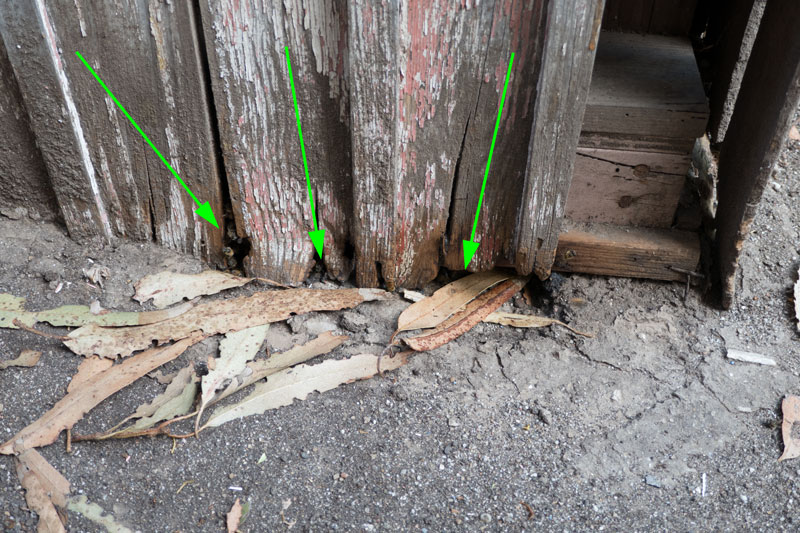
But when i removed the siding, no bees! They were under the floor.
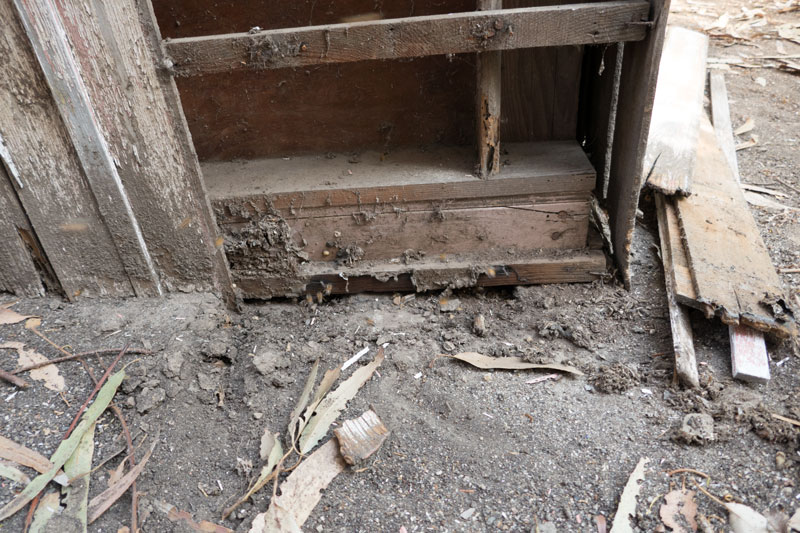
The floor was badly rotted plywood so I was able to break it up to get to the bees. Look at that comb - Almost like a Langstroth hive. These bees have been here for several years to make all this comb. It's clearly not a first year hive. The comb was easy to remove and I was able to vacuum up the bees fairly easily as I removed the comb.
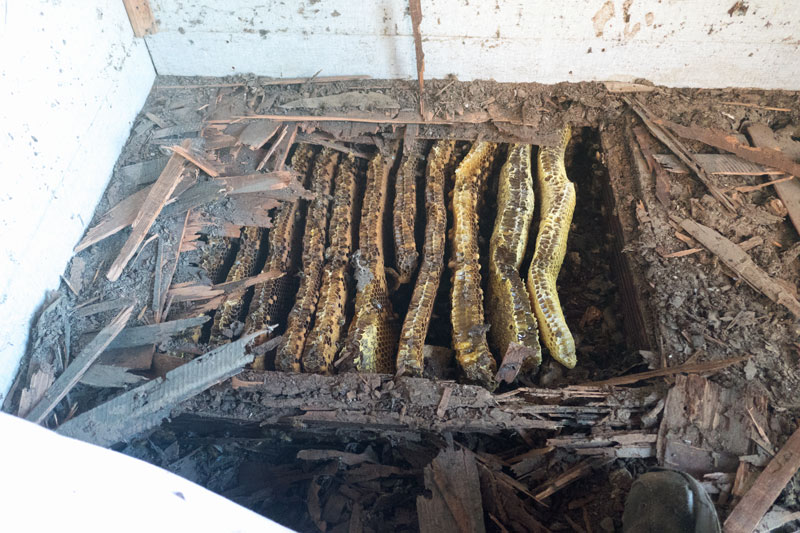
Here's the cavity after I removed the comb and bees. The bees were pretty docile. The hardest thing was breaking up the floor to get to them.
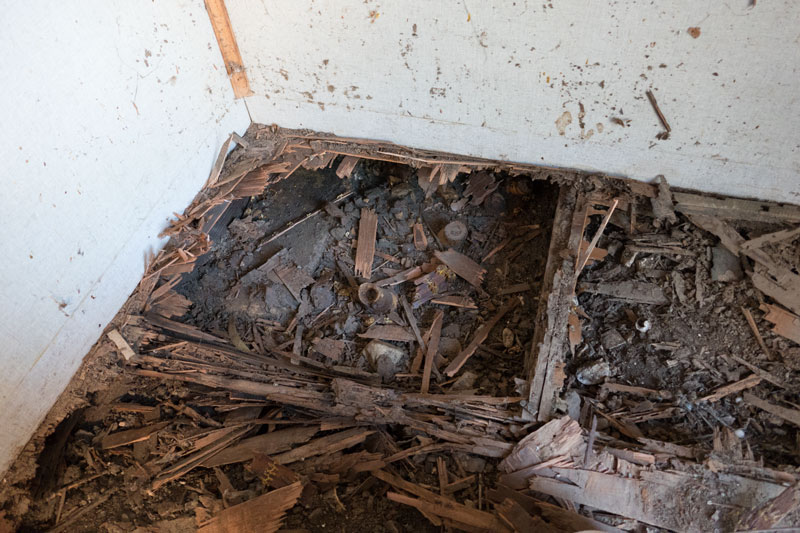
Here's Leila holding one piece of brood comb that we're going to put into a frame.
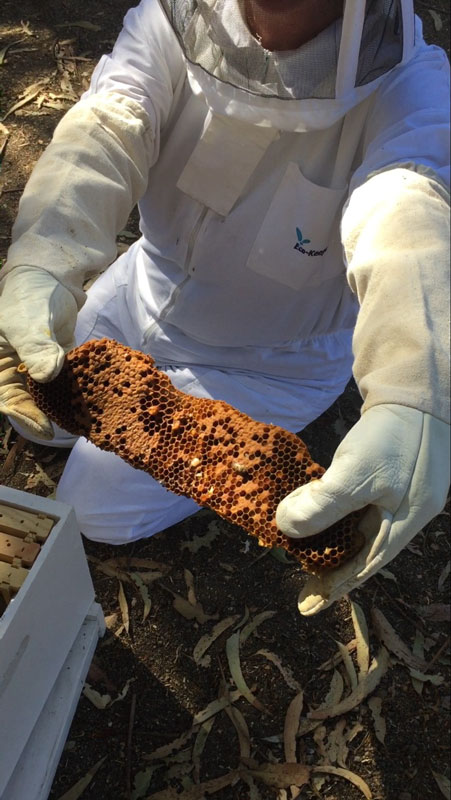
We put the brood comb in frames and threaded the comb with skewers, as described in the 8/25/2017 posting. It was a warm day so I don't think the brood got chilled. We moved as quickly as possible.
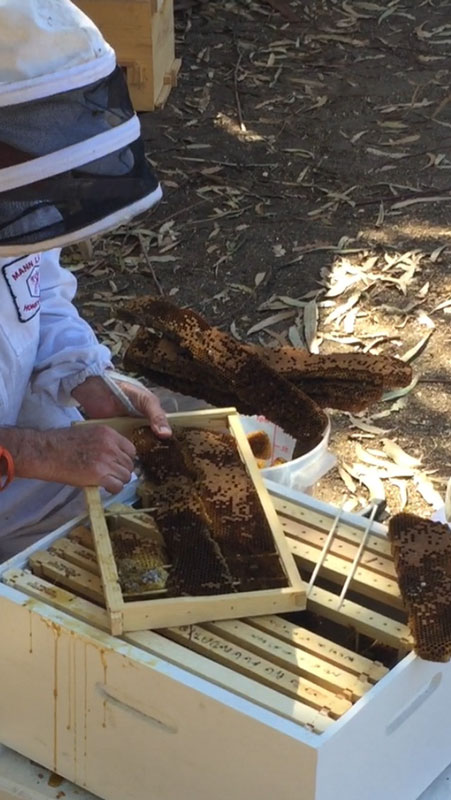
I took the bees (in the bee vacuum) and the brood box to my back yard. There, I put the bee vacuum on top of the brood box and pulled the bottom out of the bee vacuum. I checked the bee vacuum later that night and the bees had migrated down to the brood comb.
I hope I got the queen but if I didn't there is lots of brood in the comb and, I expect, new eggs that the nurse bees can convert to queens. I've had good success in the past with getting the queen when I used the bee vacuum.
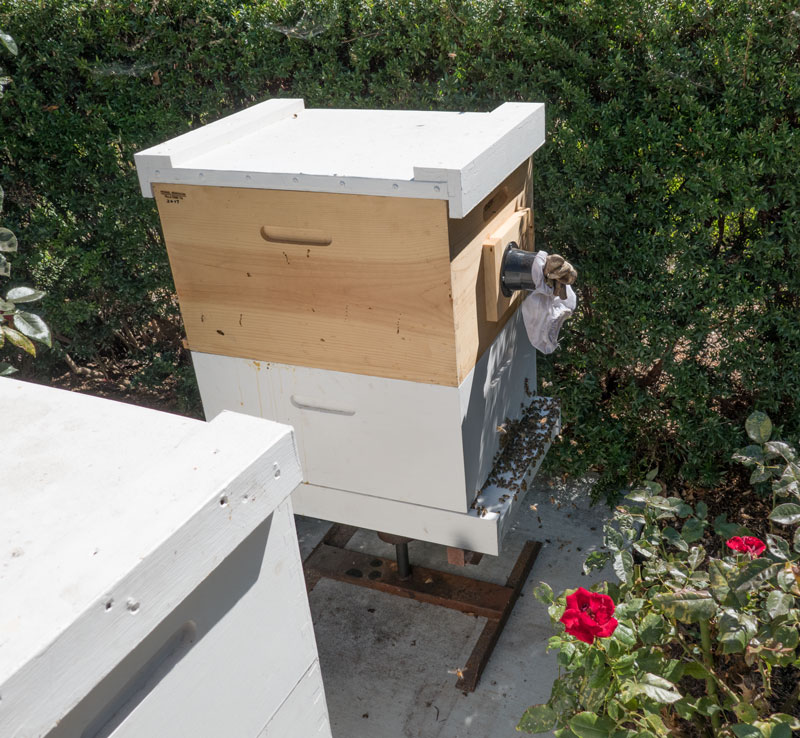
+++++++++++++++++++++++++++++++++++
[Update 10/08/2017] The bees moved down to the comb fairly quickly and I was able to remove the vacuum this morning. It'll be a couple of weeks before I know if we got the queen but I'm optimistic. I see forager bees flying off to gather nectar and pollen (and returning). So it looks like the hive is getting organized and back to a regular routine.
I went back to the site of the cutout this morning to see if I could recover any bees that were out foraging when we did the cutout but there weren't many bees at the site. Maybe a dozen or twenty - not enough to try to recover.
+++++++++++++++++++++++++++++++++++++++
[Update 10/20/2017] It's been a couple of weeks since I put the bees in the hive and it's time to take a peek and see what's going on. A friend of mine, Sam (Samantha), came by to see what the bees look like. Here she is looking at the hive.
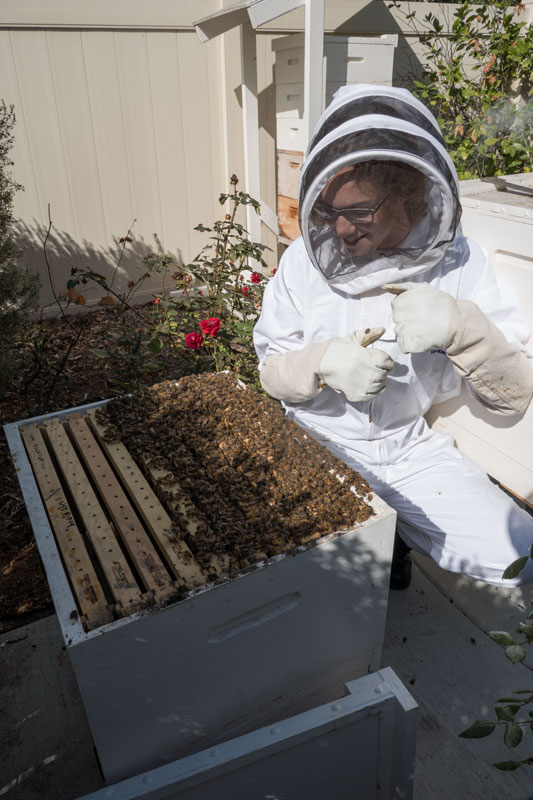
There are lots of bees and a significant amount of capped brood so I expect there's a queen in the hive. But workers take 21 days to develop so it's possible the brood I'm seeing is the result of eggs that were in the comb. I did not see any queen cells which would also indicate that there's a queen in the hive. I could not find the queen, but that's not unusual.
In another week or two it will be past the 21 days for development of workers so if there's capped brood at that time, it will be absolute proof that the queen is laying.
It appears to be a healthy, developing hive. And very docile. They didn't bother us at all during this examination.
When I vacuum up bees from a ground cavity, such as where this one was, I get a fair amount of dirt and other "stuff" sucked up with the bees. When I pull the bottom out from the bee vacuum, that junk falls into the hive. While we were in the hive, we cleaned out a lot of that stuff, including in the base, where a lot of it had fallen. Maybe what I should do in the future is not pull the base all the way out - maybe just 3/4 out - and all that junk wouldn't fall into the hive.
++++++++++++++++++++++++++++++++++++++
[Update 11/4/2017] I went into the hive today and things look very good. There's lots of bees, lots of brood and a fair amount of honey. No question that the queen survived the cutout and vacuuming. Considering that it's only been a month since they were hived, I think they're doing great. Winter is coming but we won't have really cold nights until January and February so they still have time to get more honey stores in. It looked like there was some water that got into the hive from a very light rain we had. I'll have to make some telescoping hive tops for the upcoming rainy season.
++++++++++++++++++++++++++++++++++++
[Update 1/17/2017] The bees are doing great. I made telescoping hive covers but that was not the problem with the moisture in the hive. The moisture was from the bees. I researched on the web and found that the best solution was a "bee quilt" which I made for each of my hives. The quilt seems to work well to reduce the amount of moisture in the hive. See my blog post on making the bee quilts.
I've since added a second brood box to the hive. The bees started filling that box, mostly with honey, so I added an excluder and one super. Probably a bit early, but I don't think it will cause any problems.